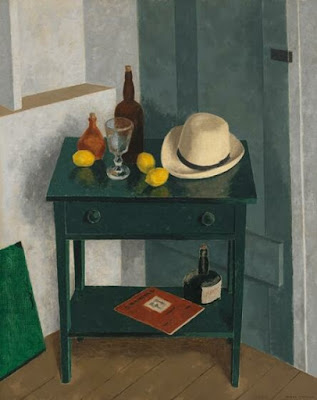Henri Rousseau, "Football Players"

In the whole of Art, every emotion and human feeling should be encountered, and the one great feeling so often missed is humor. I don't think Henri Rousseau (1844-1910) intended for this oil painting to be laughed at, but in 2020, it certainly puts a smile on my face. And, so that is my gift to you this week. This marks the 3rd Rousseau painting portrayed on this blog (entry 18, The Dream from 8/15/2019 and entry 40, The Sleeping Gypsy from 1/6/2020). So his life has been adequately covered, but two reminders. One is that Rousseau took to painting as a mature adult, into his 40th year, and second, it took sometime before his work was accepted by the artistic Paris community. But he was diligent, and kept going, and today we have a wonderful collection to appreciate and admire. So here we have four almost identical men, in costumes that today look more like pajamas. If you look close you will see the only difference is color. One "team" has brown/yellow st


